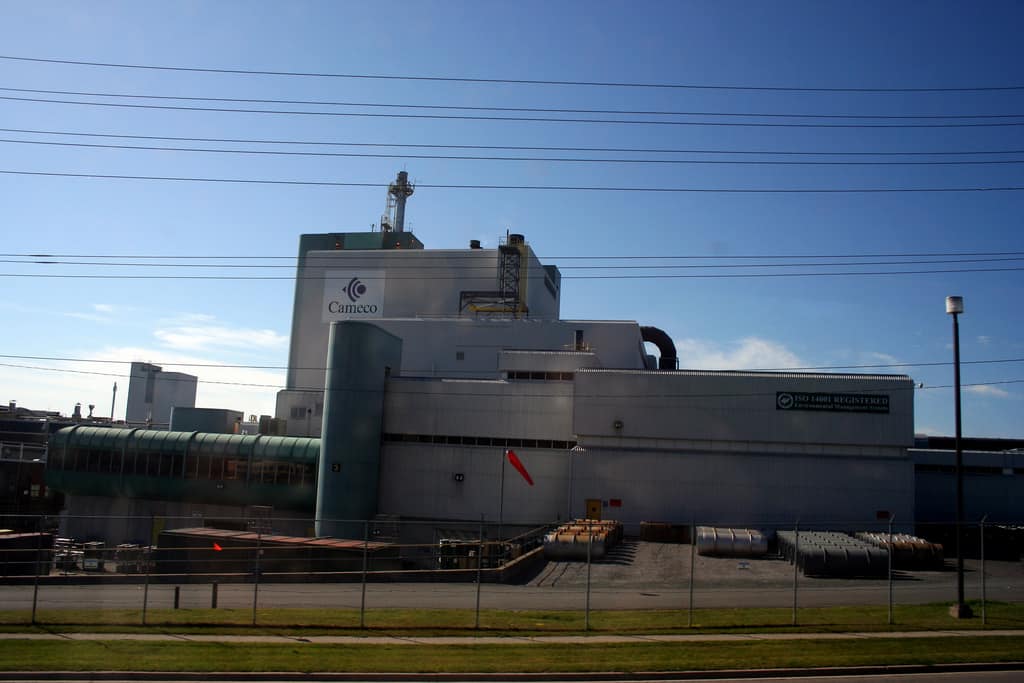Famed billionaire investor Li Ka-shing’s $110 million investment in uranium explorer NextGen Energy Ltd. (TSX:NXE)(NYSE:NXE) has significantly boosted the degree of optimism surrounding the outlook for uranium.
That surge in optimism is long overdue. Over the last 10 years, the value of the radioactive fuel has plummeted to less than a sixth of what it was at its 2007 high.
While some analysts believe that this investment, along with a range of other indicators, signifies that uranium prices are about to soar, it does not suggest that the uranium mining industry has entered a renaissance.
There are a range of trends which indicate that nuclear power generation, the only user of uranium, is in a terminal long-term decline. That makes much of the hype surrounding beaten-down uranium miners such as Cameco Corp. (TSX:CCO)(NYSE:CCJ) and its recent rating and price target upgrade irrelevant.
Now what?
The increasingly positive outlook for uranium mining stems from a belief that the current global supply glut, which has been placing considerable pressure on prices, will be eliminated over the next two years.
This is for several reasons, one of the most significant being a sharp uptick in demand for uranium because global installed nuclear capacity is forecast to grow by 60% between now and 2040.
Coupled with this is the expectation that supplies will diminish because of higher-cost producers being forced to shutter uneconomic production in the difficult operating environment. It is also thought that the slump in prices is responsible for a dearth of investment in exploration and mine development that will lead to further supply shortfalls, especially once demand starts to grow.
Nevertheless, there are signs that global uranium supplies are set to grow, despite the views expressed by some analysts and industry insiders.
From 2014 to 2016, world uranium supplies grew by 5,500 tonnes, despite claims that higher-cost operations were being mothballed.
Then there is the likelihood of even greater supply growth in coming years.
Namibia, the world’s fifth-largest uranium producer, is determined to boost output to generate much-needed export income for the deeply impoverished African nation. It is forecast that as production ramps up at the massive Husab mine, the third-largest uranium deposit in the world, Namibia’s uranium output will increase by 5,500 tonnes, causing its total output to triple.
Other major uranium miners, such as Rio Tinto Plc. and BHP Billiton Ltd., are also mulling over boosting production. This is because their concerted efforts to drive efficiencies and reduce costs means that even a moderate uptick in the price of uranium combined with increased production will give their cash flow a solid boost.
Another major threat, aside from the extreme unpopularity of nuclear power in a post-Fukushima world, is the falling cost of cleaner, safer renewable sources of energy.
Research shows that wind, solar, geothermal, and biomass energy, on an unsubsidized basis, all have a lower cost per megawatt hour produced than nuclear energy. Those costs will fall further because of technological improvements and growing efficiencies from the growing volume of renewables being deployed.
Furthermore, none of those sources of energy emit dangerous forms of waste that require costly and specialized storage to render them safe. Nor do they have the potential to leak highly dangerous fissile materials that can have a harmful effect on humans or animals as well as damage the environment irreparably for decades.
So what?
The tremendous upswing in demand for uranium required to revitalize the uranium mining industry is highly unlikely. Not only has sentiment turned against nuclear power, but cleaner, safer renewable forms of energy are becoming increasingly cheaper and more efficient because of technological improvements.
Furthermore, prices will remain under pressure for some time because of growing global uranium supplies and high inventories. These factors make any significant recovery in the fortunes of primary uranium miners like Cameco unlikely.







